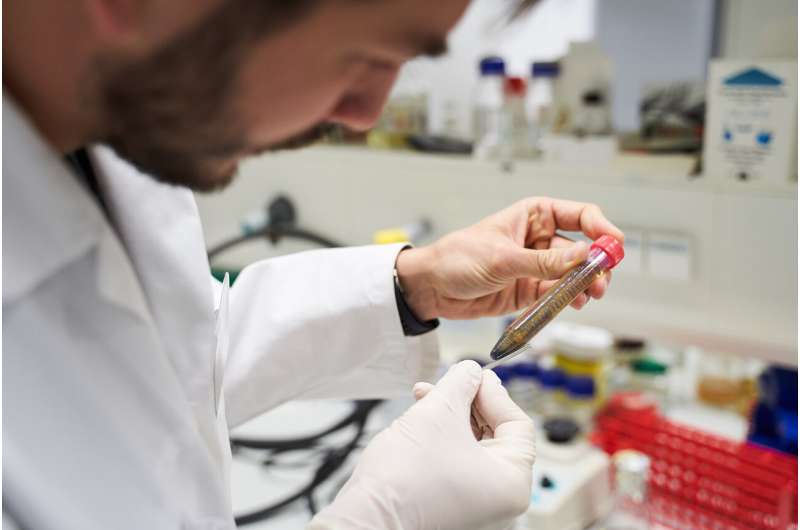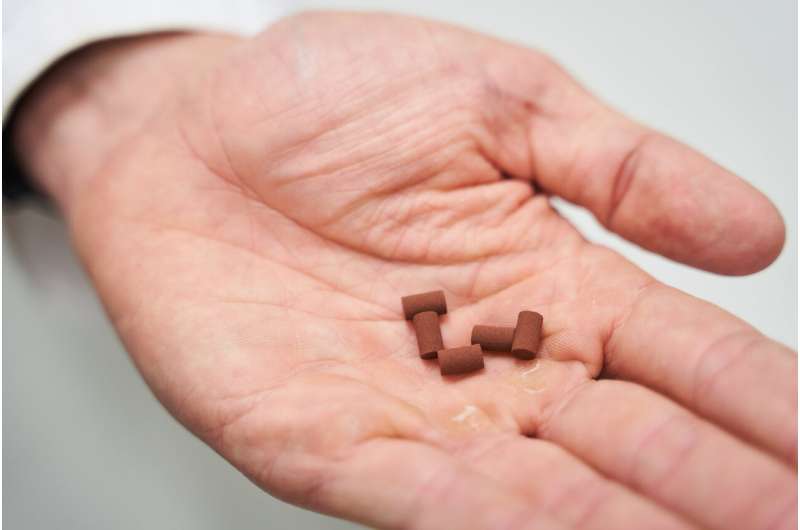Building a Mars base with bacteria

How do you make a base on Mars? Simple: you send some bacteria to the red planet and let them mine iron. After a couple of years, you send in human settlers who use the iron to construct a base. That, in a nutshell, is the proposal of Ph.D. candidate Benjamin Lehner of Delft University of Technology. Together with Delft colleagues and researchers from the space agencies ESA and NASA, Lehner has worked on an extensive plan for an unmanned mission utilizing bacteria for the past four years. On Friday the 22nd of November, he will defend his Ph.D. thesis at TU Delft.
Suppose you want to build a base on Mars. Of course, you could load up a rocket with astronauts, tools and building materials. But such an approach is very expensive, because of the astronomical costs per kilo involved in space launches. On top of that, people are ill-equipped to withstand the radiation they are exposed to on the journey to Mars and on the surface of the red planet itself. They also need oxygen and substantial amounts of food and they get tired and sick.
Unmanned capsule
Benjamin Lehner, a Ph.D. student at Delft University of Technology with a background in both nanotechnology and biology, has now come up with a plan that does not involve any human beings in the first couple of years. His plan also eliminates the need to send heavy materials to Mars. In his dissertation, Lehner proposes the use of unmanned capsules containing three components: a rover, a bioreactor and a 3-D printer.
The rover is not much more than a shovel on wheels. During the day, it scoops up the iron-rich Martian soil (called regolith) and brings it to the bioreactor. This reactor is filled with bacteria of the Shewanella oneidensis species. "In its natural form, we can't use much of the iron in the Martian soil," explains Lehner. "But S. oneidensis has the ability to turn part of the soil into magnetite, a magnetic oxide of iron."

Residual waste
After the bacteria have done their work, the magnetite can be extracted with magnets. Using a technique called Lithography-based Ceramic Manufacturing (LCM), the 3-D printer then converts the raw material into screws, nuts, iron plates and other objects—everything that future settlers need to build a Martian base.
Some major advantages of bacteria are that they are self-reproducing, easy and cheap to transport and that they can withstand high amounts of radiation. In Lehner's plan, micro-algae feed the bacteria. These algae convert sunlight and CO2 from the Martian atmosphere into nutrients and oxygen. They also produce residual waste, which will be an important resource for the first settlers of Mars since it can be used as compost. The biomining reactor itself also produces such organic waste.
Risk of contamination
Lehner and his team have calculated how much iron one unmanned capsule with a 1400 liter reactor could produce: about 350 kilograms per year. "After 3.3 years, it would produce more iron than can fit inside the capsule," he says. "By sending several of these unmanned modules to Mars, we can produce a good amount of iron in a few years' time."

The Ph.D. candidate has also considered the storage of the 3-D printed material. "We want to prevent our bacteria from contaminating the planet, since that could hinder the search for life on Mars." The solution? An inflatable sealed chamber attached to one side of the capsule. The material can be stored safely in this protected space.
Further development
Lehner's proposal fits within an approach that has grown more popular in space research in recent years: in situ resource utilization (ISRU), the collection, processing and use of materials that are naturally present on a planet or other celestial body. "ISRU is an important technology we need to pioneer in order to make sustainable exploration possible," says Dr. Aidan Cowley, ESA's Science Advisor. "All approaches should be examined, and in this context, Benjamin's work adds valuable insight into biological processes for such applications."
ESA and NASA have already indicated that they would like to develop Lehners ideas further. "So who knows, maybe this plan will become a reality someday," he says proudly.
More information: 'To new frontiers, microbiology for nanotechnology and space exploration' doi.org/10.4233/uuid:acd7102b- … b5-972e-fe3a2ad9c52e
Provided by Delft University of Technology




















